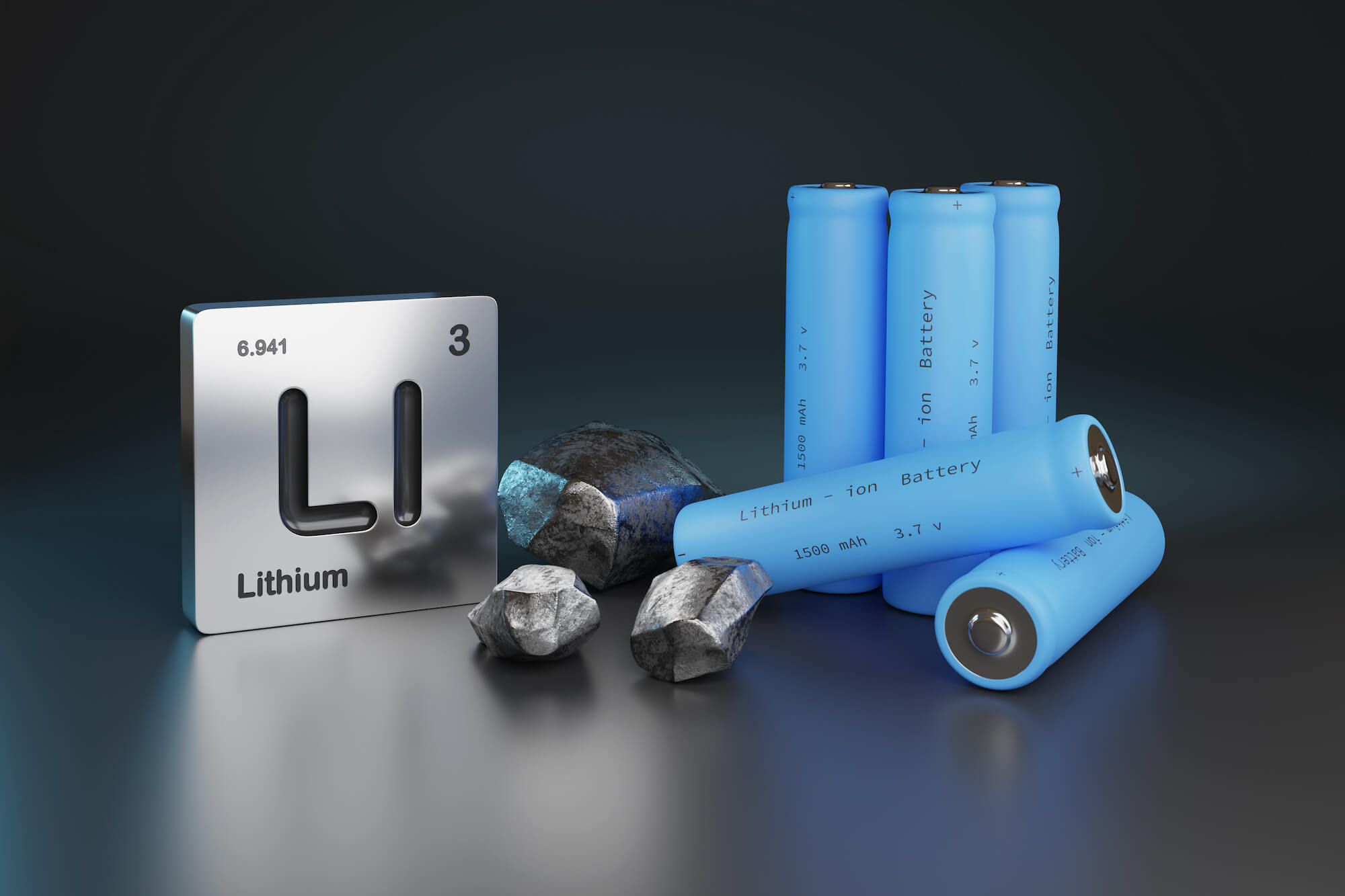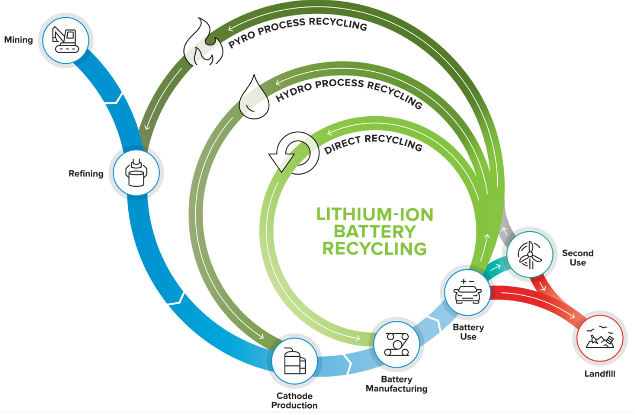
Ever since their invention in 1800 (thanks, Alessandro Volta), batteries have played an ever-increasing role in society. They allowed us to store energy on a larger scale than ever before, to carry the world’s collective knowledge in our pocket, and soon, they will allow us to transition from dependence on fossil fuels to renewable energy sources.
In the late 20th century, the mass adoption of electronics like cell phones spurred demand for smaller batteries with greater energy capacity. This led to the usage of lithium and the profusion of use cases for batteries in lightweight, everyday electronics.
In this blog, we explore the pros and cons of lithium-ion batteries, the revolutionary role lithium has played in telecommunications, and predict how they will continue to transform the industry. But first, some battery tech 101…

Battery Technology 101
What’s the difference between primary and secondary batteries?
Simply put, “primary” batteries consume their energy source entirely, meaning they are not rechargeable. The invention of the lead-acid battery in 1859 introduced the first rechargeable – or “secondary” – battery to the world.
The problem with lead-acid batteries is that they are heavy and bulky. This works fine for applications like automobiles or factories, where size doesn’t matter. But for your average consumer, size, and weight are considerable factors influencing electronics purchasing decisions.
What is the difference between lithium and lithium-ion batteries?
Lithium batteries represent the greatest innovation in battery technology since the invention of the lead-acid battery. They can be broken down into two categories: lithium batteries and lithium-ion batteries.
Lithium batteries are non-rechargeable, single-use primary cells. They are typically used in smaller devices like watches or calculators that require a compact and lightweight power source.
Lithium-ion batteries, on the other hand, are rechargeable secondary cells that use lithium ions to store energy. They have a higher energy density than lithium batteries so they are commonly used in more energy-intensive devices like laptops, cell phones, and electric vehicles.
What is the lithium-ion battery cycle life?
It’s worth noting that batteries aren’t infinitely rechargeable.
Batteries can be categorized by their rechargeability (primary vs. secondary) but some batteries can be recharged more than others.
The lithium-ion battery life cycle may vary depending on the type and quality of the battery. But generally speaking, a high-quality lithium-ion battery can provide anywhere from 500 to 2000 charge/discharge cycles before its capacity begins to degrade significantly. That translates to about 3-10 years.
That’s well below the 176-year record set by the Oxford Electric Bell, but as far as consumer batteries go, 10 years ain’t bad.
The Pros and Cons of Lithium-Ion Batteries for Telecom
Up until recently, communications energy storage systems depended on valve-regulated lead acid (VRLA) batteries. However, over time, experts came to recognize that these batteries came with limitations. Specifically, they:
- Have a low energy-to-weight ratio.
- Are inefficient at charging/discharging.
- Take a long time to charge.
- Have a general service life of 3-5 years.
- Operate in a narrow temperature range.
- Can cause lead pollution if not handled properly.
As lithium-ion batteries gained popularity in portable electronics, other industries have turned their attention to this promising technology as an energy storage solution on a grander scale. Telecommunications, automotive, and energy companies are looking to lithium-ion batteries to pave the way for the renewable energy market, and a more sustainable future.
Only recently have telcos begun to explore the performance requirements for lithium-ion batteries in medium- and large-scale applications. But the clock is ticking. Increasing power consumption, a shift in focus to green towers, and the rise in data usage all put pressure on telcos to find a sustainable energy solution.

All of these factors align to forecast substantial growth in the telco battery market. According to Technavio’s latest report, “the global battery market size in the telecommunication industry is expected to grow by USD 5.95 billion, progressing at a CAGR of 13.45 % from 2021 to 2026.”
Why have lithium-ion batteries become a cornerstone of the telecommunications industry? Let’s take a closer look at some of the pros and cons of lithium-ion batteries over traditional energy storage systems.
The Benefits
1. High Energy Density
The biggest advantage of the lithium-ion battery is its high energy density. Lithium-ion cells can store more energy per unit weight than other types of rechargeable batteries like nickel-metal hydride or lead acid. This makes them ideal for powering mobile devices which require long battery life and quick recharging times.
2. Small & Lightweight
Lithium-ion cells can store more power in a smaller package. They are also relatively lightweight compared to their counterparts, making them a great choice for portable electronics such as cell phones and portable power banks.
3. Life Span
As mentioned above, lithium-ion cells can last up to 10 years with proper maintenance including regular charging cycles and temperature control measures in place. This makes them an ideal choice for applications where regular replacement would be costly or inconvenient. For example, they are especially well suited to remote surveillance systems or communication towers that need reliable power sources over extended periods without interruption due to battery failure or replacement needs.
4. Environmental Benefits
The low cost of lithium-ion batteries enables power grids to store more energy from renewable sources (such as solar, wind, or hydropower). However, the production and disposal of the batteries themselves are not yet sustainable. More on that below.
5. Low Cost
Improvements in battery technology and increased production capacity have driven down the cost of lithium-ion cells. In fact, a 2021 study reported that the price of lithium-ion cells declined by 97% in the last 30 years. As a result, these batteries have become a much more attractive option for telecom applications as the lower price point makes it easier for companies to invest in a reliable energy source.
The Disadvantages
Despite their many benefits, there are also some disadvantages associated with lithium-ion batteries that telcos should consider.
1. Temperature Sensitivity
Though lithium-ion batteries operate in a wider temperature range than VRLA batteries, they are sensitive to high temperatures. They can become damaged if stored or operated at temperatures beyond their specified range and may even pose a fire hazard if not handled properly.
2. Require Careful Storage & Maintenance
Unfortunately, these batteries are not as hardy as other rechargeable technologies. They can be easily perforated, which makes transportation difficult. This is why they are not allowed on board many airplanes (or required to remain safely stored in carry-on baggage).
The greater challenge is that they require careful management when charging and discharging as overcharging or over-discharging can result in permanent damage to the cells.
3. Performance Decline
Whether or not it is in use, a lithium-ion battery’s performance – as well as its maximum capacity – will decay over time. In other words, the amount of charge it can hold diminishes meaning the amount of time before the battery must recharge will grow shorter. Still, users can prolong battery life by optimizing its usage, though these practices will vary between devices.
4. Environmental Impact
While lithium-ion batteries are widely lauded as the storage solution paving the way for renewable energy, the batteries themselves are not yet sustainable. Mining for the batteries is very intensive, often causing erosion and pollution. And at the end of the battery’s life cycle, the recycling process is so inefficient that most are never recycled.

Overall, lithium-ion batteries offer many advantages that make them an ideal choice for telecommunications applications including high energy density, long lifespan, low maintenance costs, and declining prices due to advancements in technology and increased production capacity.
Despite some drawbacks such as sensitivity to high temperatures, these batteries still offer great value for money and are likely to remain popular choices among telecom companies looking for reliable power solutions over extended periods without interruption or costly replacement needs.
Business Opportunities for Telcos
The increased popularity of lithium-ion batteries has opened up new business opportunities for telcos because operators can take advantage of these batteries’ improved performance to offer their customers more efficient and reliable services.
One example would be using lithium-ion batteries to power remote towers in areas with limited access to electricity, or to provide backup power during outages or natural disasters. This increased reliability reduces service interruptions and helps increase customer satisfaction levels. Furthermore, telecom companies can leverage the long life cycles offered by these batteries to extend their product offerings without having to replace expensive hardware components as frequently as before.
Overall, the introduction of lithium-ion battery technology has revolutionized the telecommunications industry by providing operators with higher-performance equipment at lower costs while also creating new business opportunities for those who embrace this technology early on in its development cycle.

